Next week is Superbooth, finally, and of course, there will be news about the crazy Soma Labs PULSAR-23 modular drum machine. The developer has already released a video today that shows the new design and how it sounds at the current time. It stands out from any other drum machine: very orange but has, unfortunately, lost the crazy cable design.
A video of the PULSAR 23 will come for the Superbooth 19
News From July 14h, 2018
The company Soma Labs has been known since the release of the massive Lyra Synthesizer. On the Superbooth, he presented his very special and innovative wind Synthesizer instrument (PIPE) that can produce extraordinary sounds. What he did not show there is his new work. Vlad Kreimer, the main developer of Soma Labs presented this week PULSAR-23, a new semi-modular oganismic drum machine that follows the same philosophy. The exciting thing here is that this drum machine consists o individual modules that you can patch together. This opens up a new way how to create sounds.
PULSAR-23 features 4 drum channels (bass drum, bass/percussion, snare drum, cymbals/hi-hat), 4 envelope generators, 4 independent loop recorders, clock generator, unique random generator, effects and more. As it belongs to a semi-modular instrument, there are also patch points available: 52 knobs, 11 switches and over 100 inputs & outputs provide you plenty of sound possibilities. Due to the very variable sound engine, musicians can generate high versatile sounds with it and all this is fully compatible with the Eurorack format.
What I have heard so far about the sound quality of this drum machine is amazing. It reminds me of the fat sound of the Lyra Synthesizer only in the form of a drum machine with even more options.
Overview
PULSAR-23 is an organismic drum machine that is currently in development at Soma. It has a semi-modular structure and consists of 23 independent modules:
- 4 drum channels: Bass drum, Bass\Percussion, Snare drum, Cymbals\Hi-Hat
- 4 envelope generators with the unique ability to generate a sustain for the drum channels, turning them into noise\drone synthesizers.
- 4 independent loop recorders with the option for individual clocking.
- Clock generator with an array of dividers as a very powerful tool for rhythm synthesis.
- Wide range LFO (0.1 – 5000Hz) with variable waveform.
- Shaos – a unique pseudo-random generator based on shift registers with 4 independent outputs, sample and hold and other cool features.
- FX processor with CV control incl. CV control of the entire DSP’s sample rate.
- Distortion.
- 2 CV-controlled gates.
- 2 CV-controlled VCAs.
- 2 controllable inverters.
Also, it has MIDI control and synchronization and a lot of smaller modules such as 3 assignable attenuators and 2 dynamic CV sensors for CV generation etc. In general, there are 52 knobs, 11 switches and over 100 inputs and outputs for patching, Eurorack integration, external mixing and processing, live circuit bending!
Here you can see the demo video of the laboratory prototype of PULSAR-23. It does not have the final look, the enclosure or the final panel design. Some minor features may change and some control options will be added. I’ve done the development of the main sound design and circuitry, and now I would like to introduce the project to the world. The most important things – the sound, the structure, the philosophy – are done.
Vlad Kreimer says about Pulsar
When I was starting the project, my intension was to make it patchable as mach as possible and place a control point everywhere when it may sense. It means don’t carry about amount of that points too much. But every socket is an additional space on the surface, PCB, construction problems and additional significant price as we need good ones. When the amount of sockets is over 100, like in the machine, the dimensions and price of the synth will be increased several times. To use PBS-PLS like pins that is small and cheap, is not reliable and comfortable… And then the idea with crocodile clips + M3 screws came to me, that resolve all that problems!
What benefit we have with the solution:
- Space saving design on the surface and the PCB. It takes just several square millimeters.
- As cheap as M3 screw and nut plus several washers.
- 100% reliable as it’s very simple and nothing to break.
- You can attach several clips to one pin.
- You can connect the clips together.
- You can easily connect the clips to single electronic parts like capacitors, diodes etc. that gives you the possibility of circuit bending, many experiments and is very efficient.
- You can easily connect it to any type of jacks – just attached it to the jack tip.
- Ready wires with crocodile clips are cheap and easy to get.
So despite of it’s not a standard format of connectors in musical gear I decided to make it that way as this solution cover all problems and gives a lot of benefits. However, all main connectors as MIDI and main out will have standard professional connectors and it will have a line of adapters from 3.5mm mini-jacks (Eurorack connectors) to the M3 pins.
SonicState’s Interview With Vlad Kreimer
The expected net price is 1,200-1,500 Euros. The exact price will be known when the industrial mass production version is ready. The expected date of release is autumn\winter 2018\19. The drum machine will be manufactured in Russia and Poland.
More information here: Soma Labs

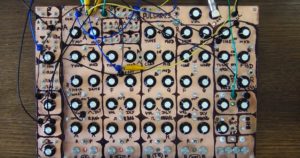
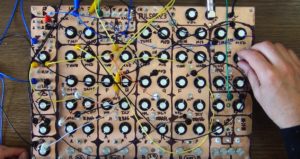
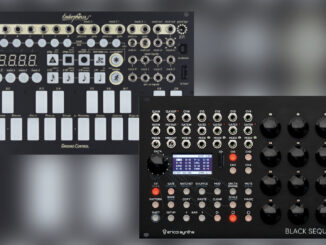
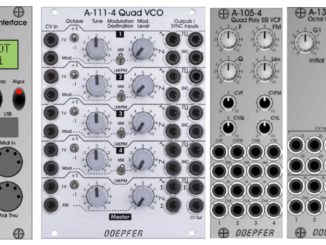
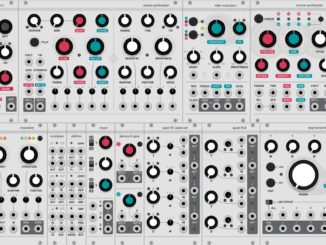
Be the first to comment